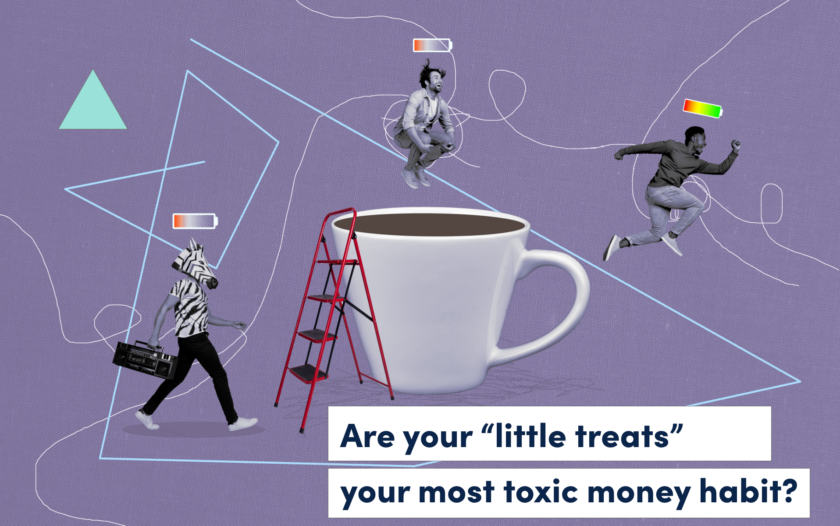Are Your “Little Treats” Your Most Toxic Money Habit? Here’s the Math
About Anouare
Anouare is a seasoned writer, editor and content strategist who started her career as a lifestyle journalist before stepping into leadership roles at publications such as AskMen and Goalcast. From editorial strategy to content marketing and project-management, she has tackled various challenges in digital media and discovered her passion for mentoring others in the process. She loves a good money mindset book and believes you can create your dream lifestyle by being yourself.
Read full bio
Buying an Erewhon smoothie after a sweaty workout. Throwing a scented candle into your Target shopping cart. Stopping at Starbucks on your way to work. This is TikTok’s “little treat” culture in action – the idea of embracing small indulgences as a way to brighten daily life and reward yourself.
“This mindset is why I can’t stop spending my money,” commented a user under TikToker @jordxnlewis’ video on little treats. So, is this new trend a budget-friendly way to embrace self-care in a world filled with bigger preoccupations? Or is treating yourself your most toxic money habit? Here’s what you need to know about the impact of little treats on your finances.
Small costs do add up over time
Remember that infamous article about millennials and avocado toast? The author argued that if younger generations would ditch little treats, they’d be able to afford a house. The article sparked backlash for ignoring the economic circumstances preventing millennials from being able to buy homes – big systemic forces that have nothing to do with treating yourself to a latte.
That said, saving money is all about delaying short-term gratification in favor of long-term financial goals. There is something to be said about small costs adding up over time. Personal finance influencer @MoneywithKatie recently shared a helpful visual breakdown of the impact of your savings rate on the time it will take to reach financial freedom. The Instagram post is quite enlightening because it shows that there is room for little treats, but that too much of a good thing can indeed come at a high longer-term cost.
Let’s say that you make $100,000. If you take 10% of your income, it would take you 41 years to reach financial freedom and have $1.3M. If you saved 50% of your income, it would take you 14 years to have $750,000. Saving half of what you earn is aggressive and probably not doable for a lot of people. Saving 10% is a small effort that still ends up moving the needle, and, in that sense, ditching little treats can help you move that needle a little faster if you’re able to put more money aside.
The point of diminishing returns
The numbers get interesting in the middle of the spectrum though. “Jumping from a 15% save rate to 20% shaves four years off your working timeline, but going from 45% to 50% only shortens it by two,” explains Katie.
Now let’s bring little treats into the equation. Let’s say that you make $65,000 a year. You spend $3,000 a month and save the rest. You’ll be financially independent in 33 years with $3.1M. Not bad, right? Let’s add a budget of $200 monthly for little indulgences – you spend $3,200 total on the same income and save the rest. This brings you to financial independence in 39 years with $4.2M.
By the way, Katie’s calculations include estimates for annual increases in income, inflation, taxes, and average rate of return on investments. But that’s not the point. As she writes on Instagram, you can take the “shortest, steepest path or you can take the longer, more enjoyable one” to the same place. All of a sudden, little treats don’t seem so bad if they help you keep your sanity while you work towards reaching achievable saving goals.
Bottom line
At the end of the day, mindful spending is a key part of reaching financial independence. Your little treats can quickly add up if you’re not intentional and don’t work on developing important financial skills. If you can’t stop spending emotionally, little treats can therefore be a toxic money habit.
That said, if you’re able to keep a budget, it’s perfectly reasonable to enjoy yourself while saving for the future. In fact, it can help you stick to your budget because you won’t feel super restricted.









